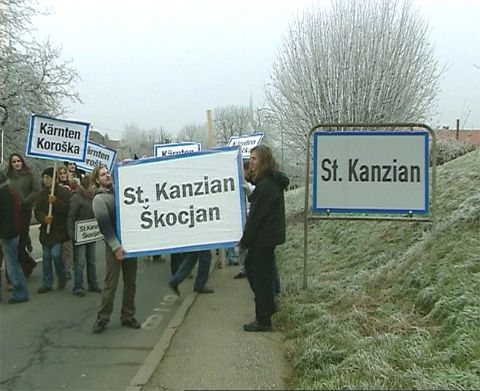 |
Thomas Korschil / Eva Simmler

Article 7. Our Right!
Starting from issues still unresolved today, Korschil and Simmler reconstruct in their first documentary the chequered history of the minority conflict in Carinthia. The film focuses on the eventful 1970s and above all the politically active Slovenian youth.
“Article 7 – Our Right!” was the main slogan of the solidarity movement throughout Austria which pressed for a complete implementation of the protection of minorities laid out in the 1955 Austrian State Treaty. With “labelling actions” – the unauthorised complementing of place-names on signs with their Slovenian equivalents – young Carinthian Slovenians brought the conflict seething under the surface to the attention of the public in the early 1970s. Soon afterwards, the first erection of bilingual signs by the government led to the so-called storming of the signposts, the violent demolition of signs by German nationalists which was accompanied by civil war-like scenes.
In Article 7 – Our Right! Korschil and Simmler employ accounts by eyewitnesses and political activists as well as extensive archive material to present a little known chapter of contemporary Austrian history. Approaching their subject matter associatively, they weave a rich contextual fabric and – despite all the abysses of human behaviour they encounter – display no shortage of irony.
“The still ‘difficult’ relations with minorities in Austria, i.e. restrictive minority policy devoid of any guiding idea, are a symptom: a symptom for the problems with Austrian identity and the resultant exclusion practices, for adapting and conjuring a distorting glorification of history. At the same time, such conflicts also reveal that there are always possibilities to resist and display solidarity.” (Korschil/Simmler)
“Article 7 – Our Right! is a film that bears witness: it tells the story of attempts to have a productive minorities policy implemented in Austria – and of resistance against this; it also tells of the questionable identity of the Republic, which for decades has broken with its own founding state treaty and constitution – and of the Carinthian Slovenians whose identity is continually called into question; and finally it tells of historical events – and how they are perceived by and through the media.” (Sylvia Szely)

artists overview |
|
|
 |

